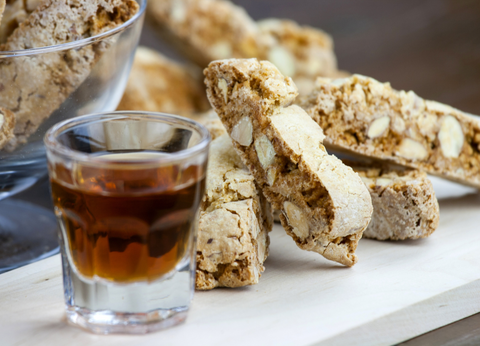From street food to fine dining, in this article, we will take you on a culinary expedition right from the comfort of your own home. We will traverse every continent, from aromatic Asian markets to Mediterranean coastal cuisine to Latin American street food. All will be revealed as to why these destinations are essential for every food lover's bucket list.
So, let's dive into the world's best travel destinations for food lovers like you!
1. Kyoto, Japan: Where Gastronomy Meets Tranquility

Kyoto, the cultural heart of Japan, is more than just breathtaking temples and traditional tea ceremonies. It's a place where spirituality is woven into daily life, and food is an art form that encapsulates centuries of tradition.
Kaiseki, the epitome of Kyoto dining, is a multi-course meal that showcases the diversity of flavours and textures nature provides each season. From delicate sashimi to artfully prepared vegetables, every dish in a Kaiseki meal tells a story of the changing seasons and the harmonious relationship between humans and nature.

The emphasis on seasonal produce in Kyoto’s cuisine ensures that people consume foods at their peak freshness and nutritional value. This is one of the many reasons why Japan is heralded as a ‘Blue Zone’ a term that refers to an above-average life expectancy.
Staples like rice, fish, vegetables, and fermented foods are high in nutrients and support gut health, heart health and cognitive function. As we journey through Kyoto's streets and savour its flavours, we're invited to partake in a holistic experience that nurtures both body and spirit—a recipe for a life of fulfilment and vitality.
Here are some of Kyoto’s Must-Tries:
Matcha Tea Ceremony
Kyoto’s tea culture is deeply ingrained in its culinary heritage. A visit to the city isn’t complete without experiencing a traditional tea ceremony, where matcha takes centre stage. Matcha, finely ground green tea, is not only a beverage but also an essential ingredient in Kyoto’s sweets and pastries.
Enjoy your matcha in one of Kyoto's most historical cafes, Nakamura Tokichi (中村藤吉), founded in 1854 and located in the cultural heart of Kyoto, the breathtaking atmosphere of this cafe is not to be missed.

Yudofu: Simplicity Elevated
Kyoto’s Yudofu, or tofu hot pot, celebrates simplicity and the essence of soy. This delicate dish features tofu simmered in a light broth, often seasoned with subtle flavours that allow the tofu’s purity to shine. Delight in the delicate flavours of Yudofu at Tousuiro, an establishment known for its serene ambience and dedication to tofu-centric cuisine.

Explore Kyoto’s Hidden Gems: The Neighborhood Eateries
While Kyoto’s high-end dining experiences are enchanting, the city’s soul resides in its humble neighbourhood eateries.
Wander through the traditional streets and seek out small local establishments that offer unpretentious yet unforgettable meals. Explore Pontocho, this narrow alley boasts a myriad of charming restaurants, izakayas (Japanese pubs), and teahouses, offering a chance to mingle with locals and indulge in an array of flavours.

Nishiki Market: The Culinary Bazaar
Nishiki Market, often referred to as “Kyoto’s Kitchen,” is a bustling haven for food enthusiasts. This covered market street is lined with stalls offering a tantalizing array of fresh produce, seafood, sweets, and local specialities. It’s the perfect place to indulge in street food and sample flavours that define Kyoto’s culinary identity.
Kyoto’s culinary scene is a symphony of flavours that harmonize tradition, innovation, and respect for nature.

As you journey through the city’s streets, you’ll be captivated by Kaiseki’s artistic allure, the vibrant atmosphere of Nishiki Market, the tranquillity of tea ceremonies, the subtlety of Yudofu, and the authenticity of local eateries. Each bite is a chapter in Kyoto’s story—a story that echoes centuries of culture, passion, and the enduring connection between food and life.
2. Oaxaca, Mexico: A Melting Pot of Cultures and Cuisine

From mountains to valleys, and a coastline that spans miles, to a rich and luscious tropical expanse of dense jungle. The food in the region of Oaxaca flourishes all year round, with a constant rotation of fresh produce, there is always something new to try.
Oaxaca’s history is a tapestry woven with the threads of indigenous civilizations, Spanish colonialism, and cultural exchange. Long before the arrival of the Spanish, the Zapotec and Mixtec civilizations flourished in the region, leaving behind archaeological wonders like the ancient city of Monte Albán. The city’s name, “Oaxaca,” originates from the Nahuatl word “Huaxyacac,” meaning “among the huaje trees.”
Here are some of Oaxaca’s must-tries:
Santo Domingo Cacalotepec for coffee lovers
You have only to travel an hour outside of the city of Oaxaca to find Santo Domingo Cacalotepec. A village tucked among the mountains. Often managed by local families, following traditional methods that prioritize sustainable practices and the preservation of the environment.
You will find lovingly cultivated organic coffee that goes straight from farm to cup. Many of these farms welcome visitors, allowing them to witness the meticulous process of coffee cultivation, from planting and nurturing to harvesting and processing.
Local cafes and markets offer opportunities to try freshly brewed coffee too. Whether it’s a robust espresso or a traditional Oaxacan café de olla, infused with cinnamon and piloncillo (unrefined cane sugar) that you choose, the warm and inviting atmosphere of these spaces reflects the hospitality of the community. This creates a perfect backdrop for connecting with locals and fellow travellers.
Mole from the land of the 7 Moles
You can't go to Oaxaca without trying at least one of the 7 variations of Mole. Mole is a sauce that is a combination of spices mixed with a base of tomatoes and broth, sometimes with added nuts, seeds, dried fruit or bread crumbs to add consistency. The most common in the region is the Poblano Mole which utilizes chocolate as an ingredient (Yum!). Each mole is a labour of love that reflects the region’s culinary heritage.
And in Oaxaca, the place to go is La Olla. This charming restaurant in Oaxaca’s city centre offers a range of moles that celebrate the diversity of Oaxacan flavours.

Tlayudas for the meat lovers
Tlayudas is the dish for you. Quintessential to Oaxacan street food, these oversized tortillas are spread with a layer of asiento (pork lard), topped with beans, cheese, meats, and salsa, and then toasted to perfection.
Go to the local favourite Itanoní restaurant where they specialize in traditional Oaxacan dishes, including tlayudas, or visit Mercado 20 de Noviembre, a bustling market that is a treasure trove of different tlayudas stalls. Here you can get a taste of the true local flavours on offer.

Drink from the spring of life at Hierve el Agua
Hierve el Agua, while not a restaurant, is a truly authentic Oaxacan experience. Hierve el Agua, is a natural wonder located just outside Oaxaca, that is not only a breathtaking site but also a glimpse into Oaxacan culinary history.
Here, you’ll find freshwater springs that create natural infinity pools where the local Zapotec people use the springs to cultivate minerals that serve as a base for a refreshing and slightly fizzy beverage called “agua de hierve.”

Oaxaca’s culinary scene is woven with history, culture, and a deep connection to the land.
As you navigate the markets, restaurants, and street stalls, you’ll be inspired by a world of flavours that defy expectations and redefine Mexican cuisine in your eyes forever.
3. Tuscany, Italy: Simplicity meets sophistication

Whether you’re strolling through medieval towns or sipping wine in the countryside, Tuscany is a paradise for lovers of all kinds: food, wine, and life itself.
Love Permeates this country like no other, from the flora and fauna to the level of thought and care put into every detail of design. As with all significant places when it comes to food, its traditional dishes tell a tale of the country's history. This time, from simplicity to sophistication.
It was through their hard times, that they learned how to let the simple ingredients shine, Tuscan food is uncomplicated yet utterly delicious.
With every corner of Tuscany offering culinary excellence, it can feel overwhelming to know where to go. The excellent news is, you can't really go wrong.

In Tuscany, dining is not just an act—it’s a sensory journey that engages the heart, the soul, and the palate. It’s about watching the sunset over rolling hills while sipping a glass of Sangiovese, or tasting the burst of flavours in a slice of handmade pici pasta, with your eyes closed. It’s an experience that lingers, creating memories that are as enduring as the region’s beauty. Follow your nose and see where you end up! Adventure beckons.
That being said, let us uncover the classic dishes and most talked about eateries that will give you the best chances of success on your adventure around Tuscany.
Here are some of Tuscany's must-tries:
Ribollita
Starting with ribollita, a hearty vegetable and bread soup. Ribollita is rustic comfort food that dates back to the time of Tuscan peasants. It’s made with vegetables like kale, cannellini beans, and stale bread, resulting in a wholesome yet flavorful dish.

Pappa al pomodoro
Another dish that pays homage to humble origins is pappa al pomodoro, a tomato and bread soup that transforms simple ingredients into something otherworldly.
You just can't beat tomatoes fresh from the land!

Bistecca alla Fiorentina
For the meat lovers, Bistecca alla Fiorentina is an iconic Tuscan steak dish, traditionally cooked over a wood or charcoal fire. It is seasoned simply with salt, pepper, and olive oil to let the deep natural flavour of the meat shine through.
Pappardelle al cinghiale
Pappardelle al cinghiale is a pasta dish that showcases the Tuscan affinity for game meat. It features wide ribbons of pasta with a rich wild boar ragù.

Cantucci
Last but not least, and what we are all waiting for, cantucci. These twice-baked almond biscotti are a beloved dessert, often enjoyed dipped in Vin Santo, sweet dessert wine or coffee.

Caffè Gilli (Florence)
Established in 1733, Caffè Gilli is a historical gem in the heart of Florence. Step into a world of elegance and try traditional pastries, and exquisite coffee, and step back in time to an era gone by.
La Grotta (Montepulciano)
La Grotta is nestled in the heart of Montepulciano. Go here to sample Pici al Ragù—a hand-rolled pasta with rich meat sauce—and take in the stunning hillside views.
Osteria di Passignano (Chianti)
Located within a medieval hamlet, Osteria di Passignano is the place to go to enjoy innovative twists on classic dishes made with locally sourced ingredients, all while immersed in the ambience of a 14th-century estate.
Embark on a gastronomic journey through Tuscany and immerse yourself in a world of culinary delight that captures the heart of Italy's culinary soul so well.
Whether you're sipping artisanal coffee while gazing at historic sites or savouring traditional Tuscan dishes in an elegant setting, each experience embodies the region's rich flavours, cultural heritage, and undeniable allure.

Start exploring culinary delights right where you are!
So whether you are planning a trip or just daydreaming about where you’ll one day see. Why wait? Culinary exploration can happen wherever you are.
And while you're waiting to get to that country you’ve always dreamed of visiting, why not try a new restaurant in your local area or a recipe online that turns into a theme night at home?
As we conclude this journey of possibilities, may your appetite for discovery remain insatiable. And may you take every culinary experience as an opportunity to connect with the world and embrace the richness of its cultures.
Adventure is right around the corner, are you ready?










